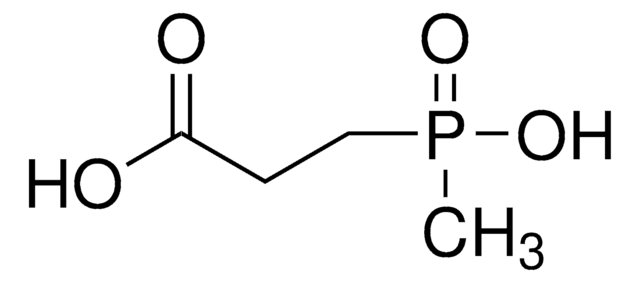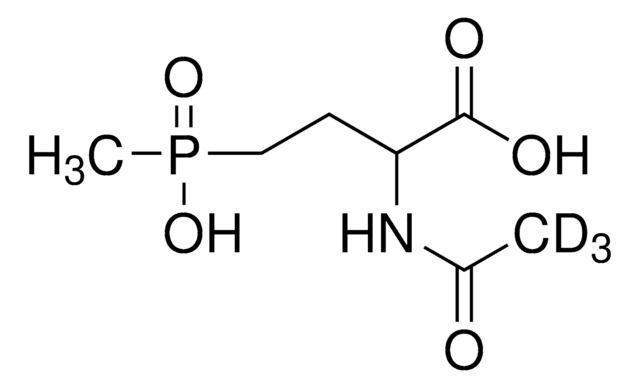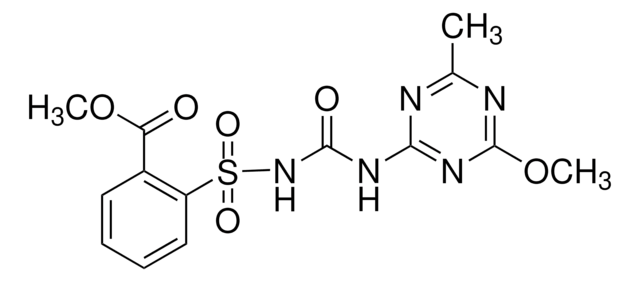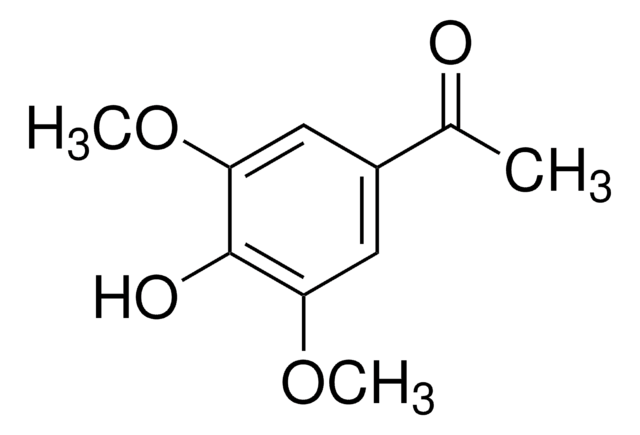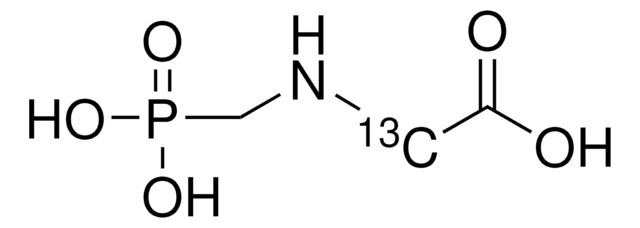45520
Glufosinate-ammonium
PESTANAL®, analytical standard
Sinónimos:
2-Amino-4-(hydroxymethylphosphinyl)butyric acid ammonium salt, DL-Phosphinothricin
About This Item
Productos recomendados
grado
analytical standard
Nivel de calidad
Línea del producto
PESTANAL®
caducidad
limited shelf life, expiry date on the label
técnicas
HPLC: suitable
gas chromatography (GC): suitable
mp
215 °C
aplicaciones
agriculture
environmental
formato
neat
cadena SMILES
N.CP(O)(=O)CCC(N)C(O)=O
InChI
1S/C5H12NO4P.H3N/c1-11(9,10)3-2-4(6)5(7)8;/h4H,2-3,6H2,1H3,(H,7,8)(H,9,10);1H3
Clave InChI
ZBMRKNMTMPPMMK-UHFFFAOYSA-N
¿Está buscando productos similares? Visita Guía de comparación de productos
Descripción general
Aplicación
- Human serum samples by mixed-mode solid-phase extraction (SPE), tert-butyldimethylsilyl (t-BDMS) derivatization and gas chromatography-mass spectrometry (GC-MS) operating on electron impact (EI) mode of detection.
- Water samples by ion-exchange cleanup and derivatization followed by analysis using GC coupled to tandem mass spectrometry (MS/MS) equipped with EI mode of detection.
- Finnish arable soils by high performance liquid chromatography combined with fluorescence detection (HPLC-FLD).
Información legal
¿No encuentra el producto adecuado?
Pruebe nuestro Herramienta de selección de productos.
Palabra de señalización
Danger
Frases de peligro
Consejos de prudencia
Clasificaciones de peligro
Acute Tox. 4 Dermal - Acute Tox. 4 Inhalation - Acute Tox. 4 Oral - Repr. 1B - STOT RE 2
Código de clase de almacenamiento
6.1C - Combustible acute toxic Cat.3 / toxic compounds or compounds which causing chronic effects
Clase de riesgo para el agua (WGK)
WGK 3
Punto de inflamabilidad (°F)
Not applicable
Punto de inflamabilidad (°C)
Not applicable
Equipo de protección personal
dust mask type N95 (US), Eyeshields, Faceshields, Gloves
Elija entre una de las versiones más recientes:
¿Ya tiene este producto?
Encuentre la documentación para los productos que ha comprado recientemente en la Biblioteca de documentos.
Los clientes también vieron
Artículos
Glyphosate and related compounds are measured in oatmeal and infant cereal using ion-exchange polymer-based particles for HPLC and SPE. Low level detection was obtained.
A simplified LC-MS/MS method to determine glyphosate and related compounds using a Supel™ Carbon LC U/HPLC column for stability under higher pH conditions and sufficient retention for the polar analytes in the presence of methanol as an extraction solvent.
Protocolos
LC/MS Analysis of Glyphosate and Metabolites on apHera™ NH2, 2 mm I.D. Column
Nuestro equipo de científicos tiene experiencia en todas las áreas de investigación: Ciencias de la vida, Ciencia de los materiales, Síntesis química, Cromatografía, Analítica y muchas otras.
Póngase en contacto con el Servicio técnico




